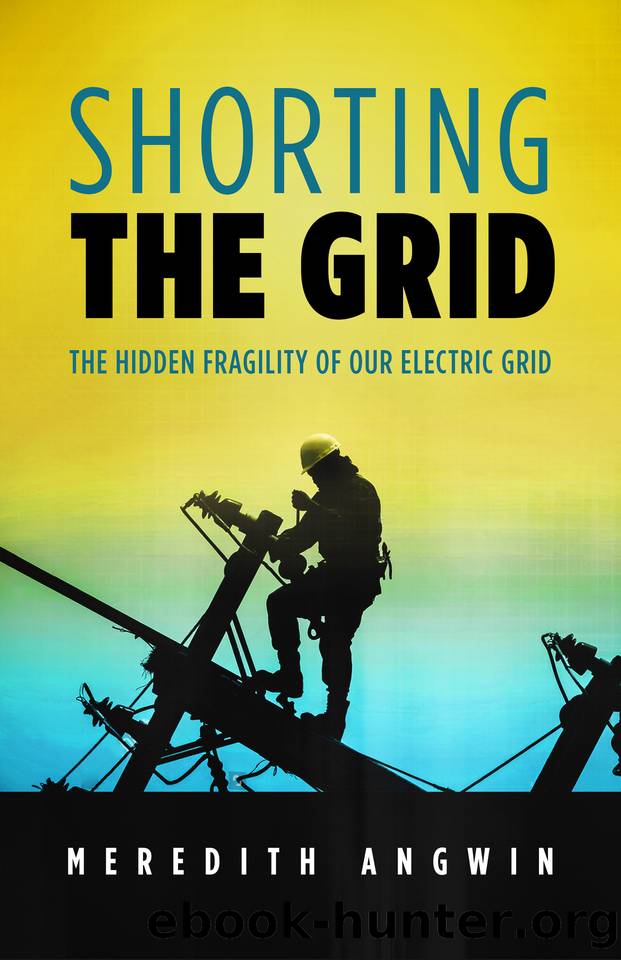Shorting the Grid: The Hidden Fragility of Our Electric Grid by Meredith Angwin

Author:Meredith Angwin [Angwin, Meredith]
Language: eng
Format: epub
Publisher: Carnot Communications
Published: 2020-10-19T00:00:00+00:00
CHAPTER 31
RECS ARE US
RECs and their sales
EVERY NOW AND AGAIN, we will see an announcement that some company is doing its part for the environment by using â100% renewableâ electricity. This is supposed to make us imagine a big industrial facility surrounded by wind turbines and solar panels. Well, no. Thatâs not the right image. Better to think about an accountant.
When a renewable-energy source such as a solar panel or a wind turbine makes a kWh of electricity, it also makes something invisible: a REC (renewable energy certificate) worth one kWh of renewable credit. It sells the electricity to the grid, and it sells the REC somewhere else.
Usually, RECs are sold to a distribution utility in a state that requires utilities to use a certain percentage of renewable power. With a fistful of RECs, the utility can claim to have bought the correct amount of renewables. The RECs are the renewables, from an accounting point of view. Buying the REC gives money to a renewable facility, and that helps it be competitive with other facilities. On the other hand, RECs (pardon my opinion here) are very misleading. A utility in Connecticut can buy a REC from a wind farm in Maine, and the Connecticut utility can claim to be using renewable electricity. Meanwhile, almost all the electricity on the local grid comes from high-emissions power plants burning gas, and from low-emissions sources such as nuclear and large hydro plants. In most states, the nuclear and hydro plants are not allowed to make or sell RECs. (Remember, the whole REC thing goes by state.)
RECs donât even have to be on the same grid as the REC buyer. A Connecticut utility buying RECs from Maine is bad enough. The power from Maine is being used in Maine, or maybe in New Hampshire. Nobody can track an electron, but it is unlikely that the power made in Maine is finding its end user hundreds of miles away in Connecticut. But at least the two states are on the same grid system.
REC markets can be even broader. As an article in EnergySage reports:164
Organizations and individuals can buy RECs from any supplier, which means that a company in Vermont can buy RECs generated in South Dakota. The company would save some money by doing so ⦠[but] buying more expensive Vermont RECs would be a show of support for local renewable energy generation.
This is a dramatic example (people in Vermont buying RECs from South Dakota), but the statement that âOrganizations and individuals can buy RECs from any supplierâ is too broad. RECs are administered by state, and the states make and change their rules. For example, out-of-state suppliers used to be able to participate in the Pennsylvania Solar REC market. In 2017, Pennsylvania restricted eligibility for that market to solar photovoltaic systems sited in Pennsylvania.165 Still, according to the rules in many states, buying a REC does not necessarily require the buyer to be anywhere near where the renewable power is being supplied.
Oh, my. I have now mentioned solar RECs and states.
Download
This site does not store any files on its server. We only index and link to content provided by other sites. Please contact the content providers to delete copyright contents if any and email us, we'll remove relevant links or contents immediately.
International Integration of the Brazilian Economy by Elias C. Grivoyannis(57320)
The Radium Girls by Kate Moore(10907)
Turbulence by E. J. Noyes(7037)
Nudge - Improving Decisions about Health, Wealth, and Happiness by Thaler Sunstein(6633)
The Black Swan by Nassim Nicholas Taleb(6190)
Pioneering Portfolio Management by David F. Swensen(5606)
Rich Dad Poor Dad by Robert T. Kiyosaki(5147)
Zero to One by Peter Thiel(4824)
Man-made Catastrophes and Risk Information Concealment by Dmitry Chernov & Didier Sornette(4735)
Secrecy World by Jake Bernstein(3782)
Millionaire: The Philanderer, Gambler, and Duelist Who Invented Modern Finance by Janet Gleeson(3568)
Skin in the Game by Nassim Nicholas Taleb(3459)
The Age of Surveillance Capitalism by Shoshana Zuboff(3422)
The Money Culture by Michael Lewis(3284)
Skin in the Game: Hidden Asymmetries in Daily Life by Nassim Nicholas Taleb(3264)
Bullshit Jobs by David Graeber(3179)
The Dhandho Investor by Mohnish Pabrai(3168)
The Wisdom of Finance by Mihir Desai(3078)
Blockchain Basics by Daniel Drescher(2890)
